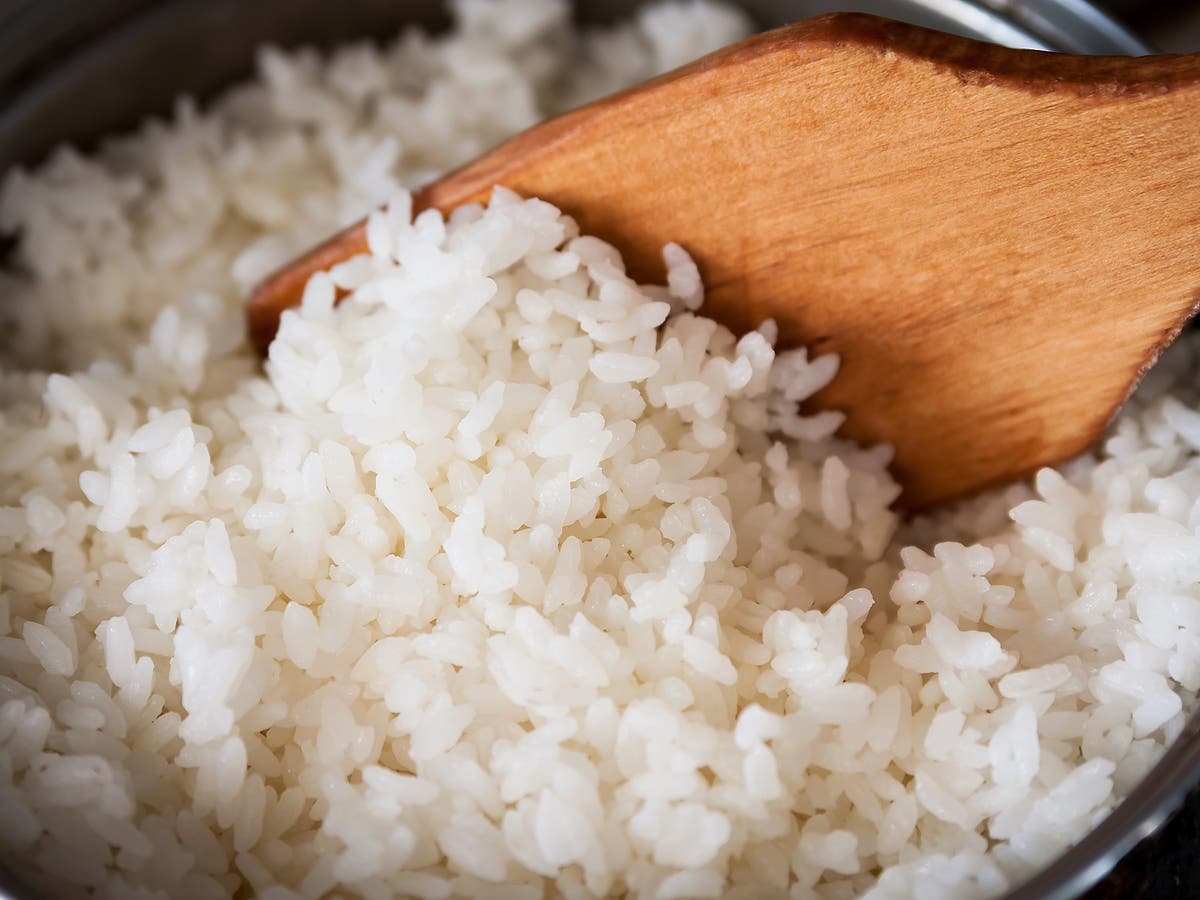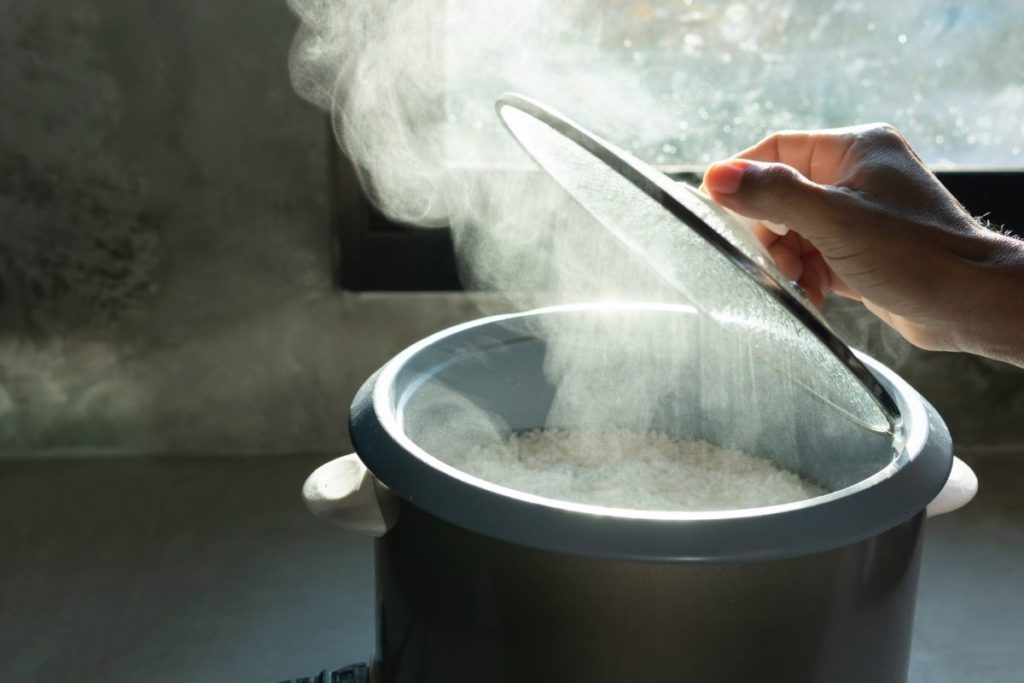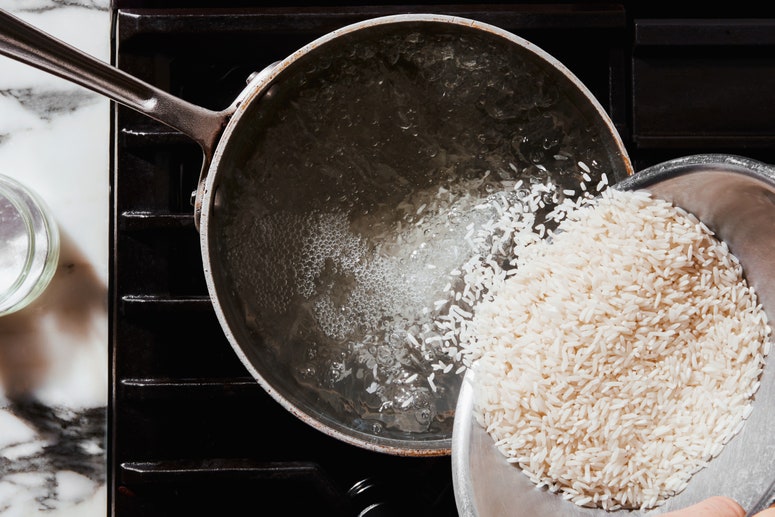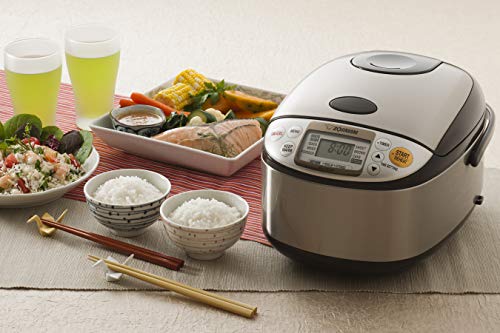How Does Rice Cooker Know When Rice Is Cooked Properly?

We are boiling rice for hundreds of years. However, consumers have recently discovered that by using a rice cooker, they can make perfect rice every time. How does a rice cooker, on the other hand, know when the rice is done cooking?
When the internal temperature within the rice cooker reaches the correct setpoint of 212° F, the rice cooker automatically shuts off. When the rice absorbs the right amount of water, this happens by default.
However, there’s a lot more to learn about rice cookers, such as how long they take to cook and how they know when to stop.
As a result, we’ll be delving into rice cookers in this article. We’ll also look at several other uses for them, as well as how to remedy uncooked rice in a rice cooker. Let’s start!
But first, let’s clarify something: what is a rice cooker?
Pressure cookers, slow cookers, microwaves, and the latest fad, the InstaPot, are all available. In the meanwhile, the rice cooker, also known as a rice steamer, also became available. This rice cooker cooks rice to the right consistency on its own.
A cooking bowl, a heat source, and a thermostat all work together to produce a bowl of properly cooked rice. What mechanism does it use to accomplish this? How does it know when the rice is “just right” when we don’t all have the same taste?
Continue reading to learn more about how this magical device works.
What is the purpose of a rice cooker?

In most situations, a rice cooker uses a 2-to-1 water-to-rice ratio, with an internal thermometer detecting the temperature of the water and rice inside. At 212°F, the water begins to boil and then turns to steam, soaking into the rice. When this happens, the cooker turns off or changes to warm mode.
You’ve probably manually cooked rice before; after all, who hasn’t?
It cooks quickly, but you must keep an eye on it to ensure that it does not overcook. It can burn to the bottom of the pan at times. Sometimes it’s mushy, and sometimes it’s not. Sometimes it’s crunchy, and sometimes it’s not. It’s very aggravating!
Thankfully, there is a kitchen appliance that can consistently make great rice. Let’s applaud kitchen appliance science and the rice cooker as an innovation!
So, how does this device function?
To use this gadget to make rice, fill the metal bowl halfway with water and rice, then turn it on to turn on the heating element and thermostat underneath the bowl. Since it composes of thin metal, the bowl heats up and conducts the heat to the rice and water.
The rice bowl inside the rice cooker is heated by the heat source, which the thermostat is controlling, which also monitors the temperature of the cooking bowl.
The water starts to boil while it cooks.
The water will turn to steam when the bottom of the bowl reaches a temperature of 212°F. The steam carries away the steam via the rice.
The rice is now absorbing the water, which is causing the starch in the rice to form a link with the hydrogen in the water, keeping in mind that starch is mostly sugar. The rice grains then gelatinize or join in layman’s terms.
It would turn to mush if you kept adding water.
However, if you continue to cook it, it will get crispy and eventually burn. Fortunately, the rice cooker incorporates a sensor that measures both the temperature and the rate at which the bowl rises. The temperature rises faster when there is less water in the bowl. When it reaches a particular point, the rice cooker recognizes that the rice is done and turns it off.
In a rice cooker, how long does it take to cook rice?

Short and long-grain white rice will take 15 minutes in a rice cooker as a general rule. You can cook Basmati and Jasmin rice in as little as 20 minutes, whereas brown or wild rice takes 45-50 minutes.
We can all agree that having a rice cooker elevates dinner preparation to a new level, allowing us failsafe rice preparation with these one-button tools.
When the rice cooker, water, and rice are properly constructed, you may have flawless rice ready in 15 minutes and use it as the foundation for your meal by adding beef or chicken, assorted veggies, and a dash of soy, teriyaki, or other flavorings.
Here are cooking times for all the most popular types of rice (based on the type of rice), amount of water needed, and cooking time:
Type of rice how much water to add Cooking time
Short grain white rice 1 1/2 cups water to 1 cup rice 15 minutes
Long grain white rice 1 3/4 cups water to 1 cup rice 15 minutes
Parboiled rice 2 cups water to 1 cup rice 20-25 minutes
Basmati rice 1 1/2 cups water to 1 cup rice 15-20 minutes
Jasmine rice 1 1/2 cups water to 1 cup rice 15-20 minutes
Long grain brown rice 2 1/2 cups water to 1 cup rice 45-50 minutes
Wild rice 2 1/2 cups water to 1 cup rice 45-50 minutes
Note that parboiled rice, sometimes called converted rice, refers to rice that has already been partially cooked, like Uncle Ben’s. The rice should rest for 15 minutes before the cover is removed, according to the manufacturers. It adds a pleasing texture to the rice.
Cool-touch and pot-style rice cookers are both available, with the pot-style being the less expensive and easiest to operate of the two. The pot-style cookers come in a variety of sizes, ranging from three to thirty cups of uncooked rice, and feature a one-button mechanism (for convenience of use) and a removable pot.
Cool-touch models offer a digital readout and can cook four to ten cups of uncooked rice. The cover is hinged, but the pot is not removable. Cool-touch users claim that they retain moisture better and are easier to transport.
Delay timers and other digital features are beneficial.
What exactly is the purpose of a rice cooker?
A rice cooker’s purpose is to produce perfect rice every time with little effort or guesswork. You can set a rice cooker and ignore it, with little risk of the rice being mushy, crispy, or burned.
But that’s just the start.
The idea is convenience, as it is with instant pots, crock-pots, and other compact kitchen appliances. Take a look at what I discovered other people do with their rice cookers:

A Delicious Hot Breakfast
You may cook hot cereals or oatmeal with a bit less milk (or water), and the keep-warm function prevents the food from becoming cold or sticky. This is a fantastic feature for individuals who are late risers. Toss in some fruit, nuts, or whatever else you’d want.
Vegetables Steamed
Some rice cookers have a steamer rack that you can use to steam sliced vegetables, potatoes, or tofu. In one pot, you may also cook chicken breasts, fish fillets, or shrimp.
Risotto with no stirring
With the lid off/open, sauté onions in butter, then add a 1:4 ratio of Arborio rice to broth/wine and cook for twenty-five minutes on the “low” setting. Add herbs and grated cheese when it’s done.
Soups, stews, and beans
In a rice cooker, you may make a delicious split pea soup with ham and vegetable stew with a large amount of liquid and lots of time. It will take a long time to cook, but it will not boil over or scorch.
Fruit that has been poached
With your rice cooker, make healthful treats and snacks out of fresh fruit that has been simmered in juice, maple syrup, or wine, including apple sauce.
In a rice cooker, how do you repair uncooked rice?
If a rice cooker undercooks rice, add 1/4 cup of water, turn it back on, and cook for 3-5 minutes, then let it rest for 5 minutes with the heat turned off. It’s aggravating when something whose task is to make our lives easier, such as a rice cooker, fails us! It’s not difficult to repair if you misjudged the time or the amount of water in your rice.
Here’s how to do it in more detail:
- With your fingertips, press a grain or two to see how undercooked it is.
- Fill the rice cooker with a tiny amount of water (the amount depends on how undercooked the rice is - the more undercooked the rice is, the more water you’ll need, so start with approximately 1/4 cup).
- Restart your rice cooker.
- 2 minutes of cooking.
- Remove the pan from the heat but keep the lid closed for 5 minutes.
- If your rice turns out crispy all of the time, it’s because the seal on your rice cooker isn’t sealing properly. Instead of boiling the rice, steam is allowed to escape.
- Some rice cookers, like the instant pot, now have a locking cover. Others simply have a lid, similar to a crock-pot.
- If you don’t have a locking lid, use a clean dishcloth between the lid and the pot to keep the steam inside where it can cook the rice.
- Make sure the towel isn’t in close proximity to any burners or an electrical cord. Make rice pudding instead of your supper entrée if your rice becomes mushy.
When cooking rice, you can usually avoid undercooked rice by following one cardinal rule: The Lid Must Not Be Opened!
Why is my rice in the rice cooker burning?

High starch levels in the rice (Arborio has the most and basmati has the least), too high a rice to water ratio, or poorly set temperatures are all possible causes of rice burning in a rice cooker. A rice cooker’s primary goal is to make the most incredible rice you’ve ever had, but this isn’t always the case. However, the most common cause of burned rice is a cheap rice cooker.
In general, the thinner the inner pot is, the less expensive the rice cooker. The temperature is not as well controlled in a thin-walled pot (where the rice is cooked).
If you don’t want to spend the money on a new rice cooker, try some of these alternatives:
- Before cooking, rinse the rice three times in a colander (this releases the excess starch)
- Make sure you’re using the right amount of rice and water (I have listed those above)
- Make sure you set the temperature correctly.
- Larger quantities in the cooker (just cooking 1 cup of rice may not be enough quantity for your cooker to sense the temperature properly)
- What if you end up with crunchy rice when you didn’t intend for it?
- Caramelized starch is visible as a brown/orange-colored crust. This is a delicacy in many parts of the world, and it’s a typical result when using an analog rice cooker.
- You’ve probably had this type of crunchy rice if you’ve ever had a proper paella. However, there is a distinction to be made between crunchy and charred. If you don’t like caramelized crusty rice, scrape it off the bottom of the rice and throw it away or use it for something else. Another alternative is to cook more rice in order to reduce the proportion of “good” rice to burned rice.
Perhaps it’s time to upgrade to a more sophisticated rice cooker, such as a microprocessor-controlled one. This type of rice cooker adjusts the temperature as it cooks, reducing or even eliminating the risk of burning.
Why is it that my rice cooker keeps overflowing?
Overly starchy rice, such as Arborio, is the most common reason for a rice cooker overheating. As the starchy rice cooks and combines with the water, it produces bubbles. This causes the inside of the cooker to expand, finally spilling out. To avoid this, eat less starchy rice.
That’s why many people advise rinsing the rice a few times in a colander beforehand (as I suggested above). Of course, it’s possible that you just used too much water or exceeded the rice cooker’s capacity. Super-starchy rice, on the other hand, is a more common culprit.
What is the best rice cooker?

The Zojirushi NS-TSC10 is the best-selling rice cooker. So, if you’re looking for the Cadillac of rice cookers, this is it.
This gadget is incredible! It has two delay time settings (put it up to cook later!), and an automatic keep warm, extended keep warm, and reheating cycle.
Power wire that retracts
White rice, brown rice, porridge, cakes, vegetable steaming, and a lot more you can prepare in a variety of ways.
It also works as a slow cooker!
Dishwasher-safe removable bowl and steamer.
However, at over $150, it is by far the most expensive rice cooker.
As a result, I decided to include the best cheap rice cooker as well. So I really like the Cuisinart CRC-400 for that.
It has almost 1,000 reviews and a 4-star rating, just like the Zojirushi. This one, on the other hand, is considerably under $50!
Here are a few of its most appealing features:
You can steam rice, meats, and veggies.
When you finish cooking, it automatically switches to warm mode.
While the rice is cooking, use the built-in tray to steam other dishes.
The handles are chrome-plated and remain cool to the touch.
Some final thoughts
We looked at the world of rice cookers in this article.
This article also looked at why you might want one as well as how they work. We also looked at the right time and water levels for all of the most popular types of rice, as well as how to troubleshot a few common issues. But, in the end, we found an answer to the riddle of how a rice cooker determines when the rice is done.
The sensor that measures the temperature of the metal insert bowl that lies within the cooker is the answer. The cooker senses as the temperature rises and the pressure and temperature at which the rice is done are pre-programmed into the cooker’s microchip. So, when the rice is done the device shuts off. The rice cooker is a fantastic addition to your kitchen appliances, and it’s possibly one of the most flexible!
Any fault is almost always due to user error when it comes to making the perfect rice for any dish. However, you can repair most of the mistakes, so you can’t go wrong with a rice cooker.











